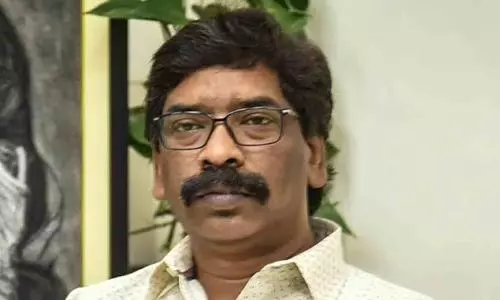
Aadhaar Case: SC queries "What's wrong with one identity?"
text_fieldsThe Supreme Court continued on Wednesday the hearing on the Aadhaar case, where arguments by the petitioners' lawyers including Kapil Sibal and discussions around the theme of the correctness and risks of having one identity for citizen, came up. The case is being heard by a Constitution Bench of the apex court.
Justice Ashok Bhushan, a member of the bench hearing the petitions, said that he found nothing wrong in the premise of 'one identity for one nation' as “after all, we are all Indians”.
The judge was responding to a submission made by senior advocate Kapil Sibal that a citizen may run the risk of being branded an “anti-national” if he or she is found without an Aadhaar. He said that the “one-nation-one-identity” principle floated through the Aadhaar scheme left no room for alternative government approved documents to establish a person's identity. If Aadhaar became the sole record for establishing one's identity, there was a risk that he will have a “civil death”.
“So what is wrong in one identity for one nation? We are all Indians,” Justice Bhushan said.
“Yes, we are all passionately Indian. But we are much more than our Aadhaars. You [government] cannot reduce me to just one identity [Aadhaar],” Mr. Sibal said.
Justice Bhushan preferred to leave it there and to move the case forward. However, Sibal said he wanted to argue on the point. “I am not going to make a political argument. I am going to make legal arguments against this one-nation-one-identity move,” he said.
Justice A.K. Sikri, also on the five-judge Bench led by Chief Justice Dipak Misra, intervened to put matters in perspective. He summed up that what Mr. Sibal meant was that a person's identity as an Indian should not be dependent on whether he has got Aadhaar or not.
Justice Bhushan then referred to Section 57 of the Aadhaar Act to justify the use of Aadhaar for purposes other than accessing subsidies, benefits and welfare services. The petitioners had questioned also the government move to link Aadhaar to mobile phones and bank accounts.
“Aadhaar can be used for other purposes. The Aadhaar Act does not confine the use of Aadhaar to it alone. It [Aadhaar] can be used to establish a person's identity under any other Act,” Justice Bhushan interpreted the provision.
Mr. Sibal pointed out that such an interpretation of Section 57 would arm the State with “blanket power” as regards the use of Aadhaar.
“My interpretation is that this section says it is my choice to produce Aadhaar. Nobody, neither the State or private corporations, can prevent me from doing that. On the other hand, an unlimited use of Aadhaar under any law will have horrendous results,” he responded to the Judge.
Mr. Sibal said his interpretation of Section 57 was “consistent with the constitutional scheme of liberty and choice under Article 19 of the Constitution”.
He read out from a staff paper published by the Reserve Bank of India's Institute for Development and Research in Banking Technology that the Aadhaar central database or the Central ID Repository (CIDR), where the biometric details are stored, may become the “single target” and “single point of failure” for internal and foreign attacks.
“But theoretically every database can be hacked. This staff paper only highlights the need to protect databases,” Justice D.Y. Chandrachud said.
Mr. Sibal pointed out how personal information of private individuals are floating in public domain as metadata, which needs to be protected from exploitation. “But is that because of Aadhaar or the software?” asked Justice A.M. Khanwilkar.























